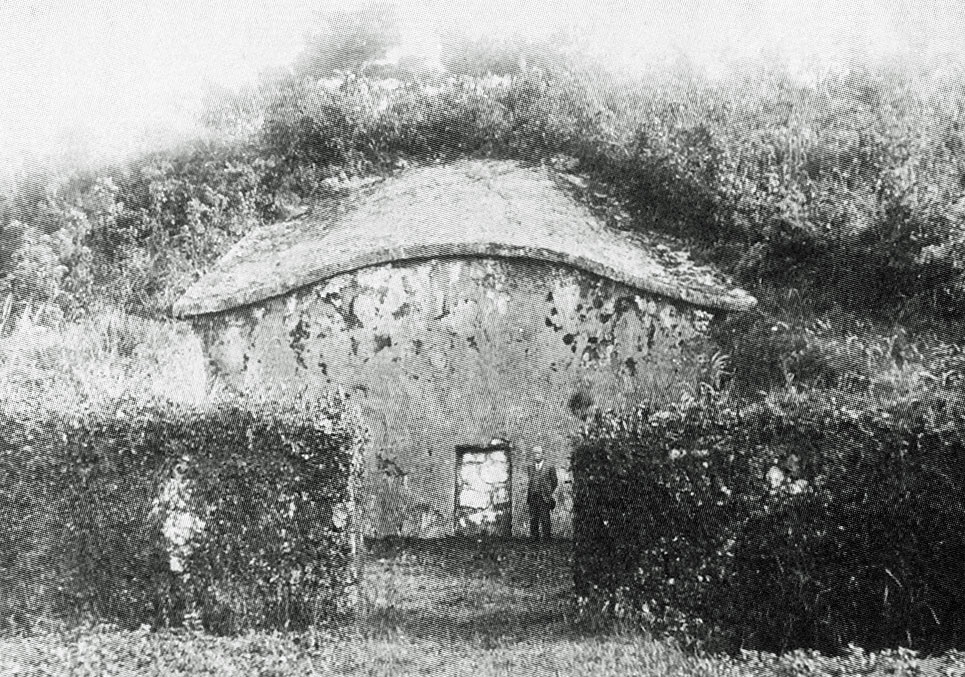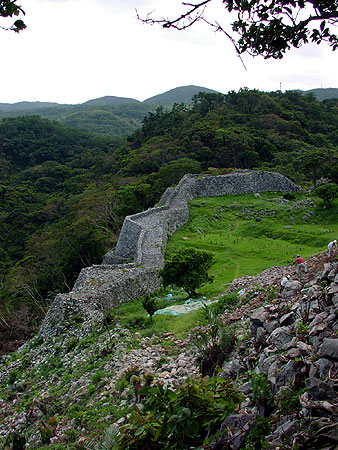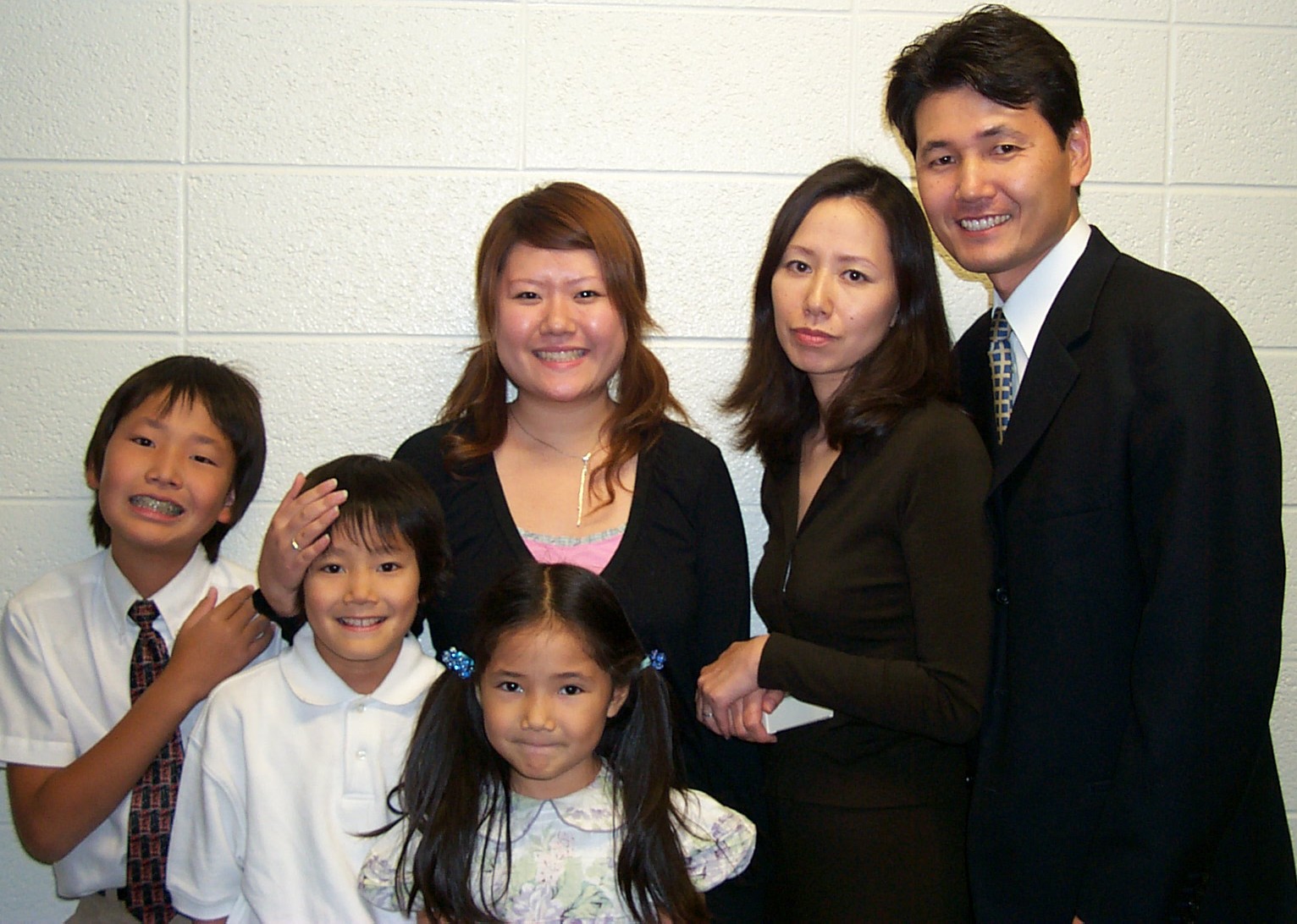|
Onarigami
is the ancient belief of the Ryūkyūan people that spiritual power is the domain of women. The roles of women in Okinawan society and the ritual traditions of the Ryūkyūan religion are related to this belief. Women with exceptionally high spiritual power are called and many have specific jobs in society. Though the role of priestesses has changed over time, they are still celebrated in Okinawa today. Ryukyuan religion Ryukyuan religion is the indigenous belief system of the Ryūkyū Islands. It is largely based on ancestor veneration and concerned with relationships with the supernatural world. It is similar to Shinto but is also influenced by Polynesian religious beliefs and practices. History Over time, Ryūkyūan religious practice has been influenced by Chinese religions, Buddhism, and Shinto. Ryūkyū Kingdom In the late fifteenth century, King Shō Shin established a formal hierarchy of religious officials that corresponded closely to the hierarchy of male ... [...More Info...] [...Related Items...] OR: [Wikipedia] [Google] [Baidu] |
Ryūkyūan People
The Ryukyuan people ( ryu, 琉球民族 (るーちゅーみんずく), Ruuchuu minzuku or ryu, どぅーちゅーみんずく, Duuchuu minzuku, label=none, ja, 琉球民族/りゅうきゅうみんぞく, Ryūkyū minzoku, also Lewchewan or Loochooan) are an East Asian ethnic group native to the Ryukyu Islands, which stretch between the islands of Kyushu and Taiwan. Administratively, they live in either the Okinawa Prefecture or the Kagoshima Prefecture within Japan. They speak one of the Ryukyuan languages, considered to be one of the two branches of the Japonic language family, the other being Japanese and its dialects. Hachijō is sometimes considered by linguists to constitute a third branch. Ryukyuans are not a recognized minority group in Japan, as Japanese authorities consider them just a subgroup of the Japanese people, akin to the Yamato people. Although officially unrecognized, Ryukyuans constitute the largest ethnolinguistic minority group in Japan, with 1.4 mil ... [...More Info...] [...Related Items...] OR: [Wikipedia] [Google] [Baidu] |
Shō Shōken
, also known as , was a Ryukyuan scholar and served as ''sessei'', a post often translated as "prime minister," from 1666 to 1673. Shō wrote the first history of the Ryukyu Kingdom, , and enacted a number of practical political reforms aimed at improving Ryukyu's prosperity and dignity in the eyes of China and Japan. Background Shō Shōken was born as the first son of Haneji Ōji Chōtai (Prince Chōtai Haneji), the third head of Haneji Udun (Palace). Haneji Udun was one of the cadet branches of Royal House. Shō Shōken inherited the position of from Chōtai in 1640, and began compiling the Mirror of Chūzan in 1650, by the orders of the king Shō Shitsu. According to ''Haneji shioki'' (The Directives of Haneji), one of his chief collections of reforms, he was approached in 1666 by a royal messenger, who was sent to offer him the position of ''sessei'' (prime minister). Shō refused, demanding that it was inappropriate for such an important appointment to be conveyed by such a ... [...More Info...] [...Related Items...] OR: [Wikipedia] [Google] [Baidu] |
Matriarchy
Matriarchy is a social system in which women hold the primary power positions in roles of authority. In a broader sense it can also extend to moral authority, social privilege and control of property. While those definitions apply in general English, definitions specific to anthropology and feminism differ in some respects. Matriarchies may also be confused with matrilineal, matrilocal, and matrifocal societies. While there are those who may consider any non-patriarchal system to be matriarchal, most academics exclude those systems from matriarchies as strictly defined. Definitions, connotations, and etymology According to the ''Oxford English Dictionary'' (''OED''), matriarchy is a "form of social organization in which the mother or oldest female is the head of the family, and descent and relationship are reckoned through the female line; government or rule by a woman or women."''Oxford English Dictionary'' (online), entry ''matriarchy'', as accessed November 3, 2013. A pop ... [...More Info...] [...Related Items...] OR: [Wikipedia] [Google] [Baidu] |
Ryukyuan People
The Ryukyuan people ( ryu, 琉球民族 (るーちゅーみんずく), Ruuchuu minzuku or ryu, どぅーちゅーみんずく, Duuchuu minzuku, label=none, ja, 琉球民族/りゅうきゅうみんぞく, Ryūkyū minzoku, also Lewchewan or Loochooan) are an East Asian ethnic group native to the Ryukyu Islands, which stretch between the islands of Kyushu and Taiwan. Administratively, they live in either the Okinawa Prefecture or the Kagoshima Prefecture within Japan. They speak one of the Ryukyuan languages, considered to be one of the two branches of the Japonic language family, the other being Japanese and its dialects. Hachijō is sometimes considered by linguists to constitute a third branch. Ryukyuans are not a recognized minority group in Japan, as Japanese authorities consider them just a subgroup of the Japanese people, akin to the Yamato people. Although officially unrecognized, Ryukyuans constitute the largest ethnolinguistic minority group in Japan, with 1.4 mil ... [...More Info...] [...Related Items...] OR: [Wikipedia] [Google] [Baidu] |
Japanese Family
The family is called in Japanese. It's basically composed of a couple as is the family in other societies. The Japanese family is based on the line of descent and adoption. Ancestors and offspring are linked together by an idea of family genealogy, or ''keizu'', which does not mean relationships based on mere blood inheritance and succession, but rather a bond of relationship inherent in the maintenance and continuance of the family as an institution. In any given period of history, all family members have been expected to contribute to the perpetuation of the family, which is held to be the highest duty of the member. History A great number of family forms have existed historically in Japan, from the matrilocal customs of the Heian. As official surveys conducted during the early years of the Meiji dynasty demonstrated, the most common family form during the Edo ( Tokugawa) period was characterized by patrilocal residence, stem structure, and patrilineal primogeniture, so a ... [...More Info...] [...Related Items...] OR: [Wikipedia] [Google] [Baidu] |
Ambilineality
Ambilineality is a form of kinship affiliation of cognatic descent that relies on self-defined affiliation within a given social system, meaning individuals have the choice to be affiliated with their mother's or father's group. Common features of societies that practice ambilineality are a shared set of land, communal responsibilities, and collective ownership of some segments of wealth and debt in their societies. This system of descent is distinct from more common genealogical structures in that rather than determining affiliation and descent using the standard determinants of biological and genealogical relation, it instead relies heavily on voluntary affiliation with one's group, oftentimes being determined by factors including residence. Societies practicing ambilineal descent are especially common in Southeast Asia and the Pacific Islands. Polynesian cultures and Micronesian cultures are often ambilineal, including, for example, Samoans, Māori, Hawaiians and people of the ... [...More Info...] [...Related Items...] OR: [Wikipedia] [Google] [Baidu] |
Occupation Of Japan
Japan was occupied and administered by the victorious Allies of World War II from the 1945 surrender of the Empire of Japan at the end of the war until the Treaty of San Francisco took effect in 1952. The occupation, led by the United States with support from the British Commonwealth and under the supervision of the Far Eastern Commission, involved a total of nearly 1 million Allied soldiers. The occupation was overseen by American General Douglas MacArthur, who was appointed Supreme Commander for the Allied Powers by US President Harry Truman; MacArthur was succeeded as supreme commander by General Matthew Ridgway in 1951. Unlike in the occupation of Germany, the Soviet Union had little to no influence over the occupation of Japan, declining to participate because it did not want to place Soviet troops under MacArthur's direct command. This foreign presence marks the only time in Japan's history that it has been occupied by a foreign power. However, unlike in Germany the Alli ... [...More Info...] [...Related Items...] OR: [Wikipedia] [Google] [Baidu] |
Missionary
A missionary is a member of a Religious denomination, religious group which is sent into an area in order to promote its faith or provide services to people, such as education, literacy, social justice, health care, and economic development.Thomas Hale 'On Being a Missionary' 2003, William Carey Library Pub, . In the Bible translations into Latin, Latin translation of the Bible, Jesus, Jesus Christ says the word when he sends the disciples into areas and commands them to preach the gospel in his name. The term is most commonly used in reference to Christian missions, but it can also be used in reference to any creed or ideology. The word ''mission'' originated in 1598 when Jesuits, the members of the Society of Jesus sent members abroad, derived from the Latin (nominative case, nom. ), meaning 'act of sending' or , meaning 'to send'. By religion Buddhist missions The first Buddhist missionaries were called "Dharma Bhanaks", and some see a missionary charge in the symbolis ... [...More Info...] [...Related Items...] OR: [Wikipedia] [Google] [Baidu] |
Christianity In Japan
Christianity in Japan is among the nation's minority religions in terms of individuals who state an explicit affiliation or faith. Between less than 1 percent and 1.5% of the population claims Christianity, Christian belief or affiliation. Although formally banned in 1612 and today critically portrayed as a foreign "religion of colonialism", Christianity has played a role in the shaping of the relationship between religion and the Japanese state for more than four centuries. Most large Christian denominations, including Roman Catholicism, Protestantism, Oriental Orthodoxy, and Eastern Orthodox Church, Orthodox Christianity, are represented in Japan today. Christian culture has a generally positive image in Japan. The majority of Japanese people are, traditionally, of the Shinto or Buddhist faith. The majority of Japanese couples, typically 60–70%, are wed in 'nonreligious' Christian ceremonies. This makes Christian weddings the most influential aspect of Christianity in contemp ... [...More Info...] [...Related Items...] OR: [Wikipedia] [Google] [Baidu] |
World War II
World War II or the Second World War, often abbreviated as WWII or WW2, was a world war that lasted from 1939 to 1945. It involved the vast majority of the world's countries—including all of the great powers—forming two opposing military alliances: the Allies and the Axis powers. World War II was a total war that directly involved more than 100 million personnel from more than 30 countries. The major participants in the war threw their entire economic, industrial, and scientific capabilities behind the war effort, blurring the distinction between civilian and military resources. Aircraft played a major role in the conflict, enabling the strategic bombing of population centres and deploying the only two nuclear weapons ever used in war. World War II was by far the deadliest conflict in human history; it resulted in 70 to 85 million fatalities, mostly among civilians. Tens of millions died due to genocides (including the Holocaust), starvation, ma ... [...More Info...] [...Related Items...] OR: [Wikipedia] [Google] [Baidu] |
Meiji Period
The is an era of Japanese history that extended from October 23, 1868 to July 30, 1912. The Meiji era was the first half of the Empire of Japan, when the Japanese people moved from being an isolated feudal society at risk of colonization by Western powers to the new paradigm of a modern, industrialized nation state and emergent great power, influenced by Western scientific, technological, philosophical, political, legal, and aesthetic ideas. As a result of such wholesale adoption of radically different ideas, the changes to Japan were profound, and affected its social structure, internal politics, economy, military, and foreign relations. The period corresponded to the reign of Emperor Meiji. It was preceded by the Keiō era and was succeeded by the Taishō era, upon the accession of Emperor Taishō. The rapid modernization during the Meiji era was not without its opponents, as the rapid changes to society caused many disaffected traditionalists from the former samurai ... [...More Info...] [...Related Items...] OR: [Wikipedia] [Google] [Baidu] |
Okinawa Prefecture
is a prefecture of Japan. Okinawa Prefecture is the southernmost and westernmost prefecture of Japan, has a population of 1,457,162 (as of 2 February 2020) and a geographic area of 2,281 km2 (880 sq mi). Naha is the capital and largest city of Okinawa Prefecture, with other major cities including Okinawa, Uruma, and Urasoe. Okinawa Prefecture encompasses two thirds of the Ryukyu Islands, including the Okinawa, Daitō and Sakishima groups, extending southwest from the Satsunan Islands of Kagoshima Prefecture to Taiwan ( Hualien and Yilan Counties). Okinawa Prefecture's largest island, Okinawa Island, is the home to a majority of Okinawa's population. Okinawa Prefecture's indigenous ethnic group are the Ryukyuan people, who also live in the Amami Islands of Kagoshima Prefecture. Okinawa Prefecture was ruled by the Ryukyu Kingdom from 1429 and unofficially annexed by Japan after the Invasion of Ryukyu in 1609. Okinawa Prefecture was officially founded in 1879 by the Empire ... [...More Info...] [...Related Items...] OR: [Wikipedia] [Google] [Baidu] |











